









Rockelstad and Hermann Göring
Goring soon travelled to Hitler, who welcomed the national war hero into the party. Goring became a trophy that the Nazis could use to gain popularity with the masses. His noble background and social talent also made him the perfect ambassador for the Nazis among the upper classes. Carin and Goring's romantic love-story was soon exploited by Goebbels massive machinery of propaganda, and the couple was toured around the nation to boost popularity. Carin, who became the First Lady of the Nazis, was especially celebrated. But she did not live to see the atrocities committed in the 30ies, for she died of a weak heart in 1931, before Hitler gained power. But even after death she remained a mascot of the Nazis, who had a booklet printed to commemorate their Swedish Saint, in a gigantic edition. Goring even had a room in his Berlin flat arranged as a shrine to Carin. During the thirties Goring maintained close connections with his Swedish relatives, and the Count and Countess often went on visits to Germany.
Eric became something of an unofficial diplomat in the relationship between the Reich and Sweden. When the Swedish government out of a fear for diplomatic complications could not receive a high-ranking Nazi, they asked von Rosen to be the host. In Sweden the Count's pro-German opinion was well known, but he did not actively spread Nazi propaganda in the country, nor did he have a role in any of the national Nazi-parties. After Hitler's invasion of Denmark and Norway, Eric von Rosen wrote in the press to calm the Swedish people. He maintained that Goring's strong love for the country was a guarantee that it would not be invaded. But privately Eric could not accept that the brother-peoples had been attacked, and when Hitler started his crusade against the Soviet Union, he understood that Hitler was a megalomaniac, and that Germany was to lose the war. Towards the end of the war he renounced Hitler and Goring altogether. 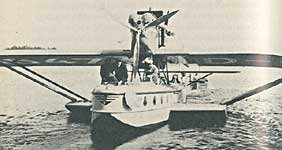 Göring arrives from Germany to Rockelstad Castle and lake Båven. Picture possibly taken in the summer of 1933, when Eric and Mary von Rosen’s youngest daughter Birgitta was getting married About the SwastikaEric von Rosen found swastikas on a Viking rune-stone on Gotland, where he went through high-school. This seemed to him a typical Viking symbol, and as such it held great appeal to the nationalistic young Count. The Vikings used the swastika as a symbol of light and happiness. When Eric was preparing for his first expedition, the one to South America in 1901, he had swastikas painted on his crates and luggage, to separate them from those of the other participants. This way of choosing for oneself a personal emblem or token of luck, was common and fashionable at that time. During his travels among the descendants of the Inca in Bolivia, he was surprised to see how often their textiles were adorned with swastikas, and realised that this was a universal symbol that had been used by many cultures all over the world.When he started rebuilding at Rockelstad the next year, he used the symbol as a decorative element everywhere in the house. They are easily spotted in the ceiling of the Great Hall, where they are painted green on a red background. The Hall was finished in 1903. When he planned his spectacular hunting-lodge in 1910, the architect Tengbom was commissioned to design a group of furniture in Old Nordic style, decorated with carved swastikas. The aeroplane that von Rosen bought in 1918, to support the Finnish fight for independence, was painted with large blue and white swastikas on its wings before it was delivered to General Mannerheim. The symbol then became the emblem of the Finnish Air Force and remained so until sometime during World War II. 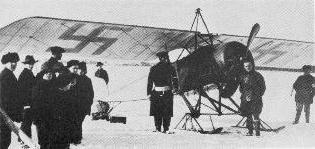 The first plane of the Finnish airforce arrives to Vasa in Finland the 6:th of mars 1918 It seems like a strange coincidence that Hermann Goring came to Rockelstad before he met Hitler or even heard of the Nazi movement. Could Goring, who apparently took a great deal of interest in Eric's personal symbol of luck, have brought the swastika from Rockelstad to the movement in Munich? We are not of that opinion. The background of the Nazi cross is probably a different one, where some sources claim that it emanated from DAP (Deutsche Arbeiter Partei) and later NSDAP - With all the distastefulness it thereafter is associated with. Several individuals who have researched in Hitler's notes claim to have found sketches of swastikas from as early as 1919. And besides, swastikas were quite abundant in Germany from the late 19th century on; it had been used by the nationalistic Volkes-movement as well as a logo for several companies, e.g. ASEA. There are also several differences between the von Rosen sign and the Nazi swastika. Von Rosen usually placed his sun-crosses in a circle, so that the arms of the cross are curved and it forms a circle itself. The Nazi swastika is tilted so that it stands diagonally, and it has straight arms even when it is confined by a circular field. |
|

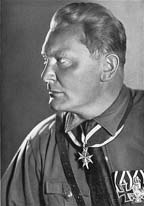
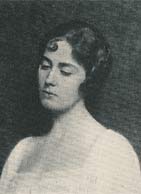
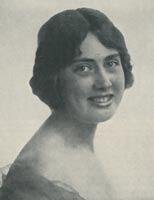
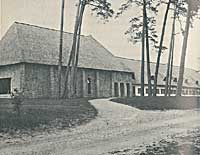
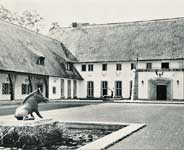









 På Svenska tack
På Svenska tack